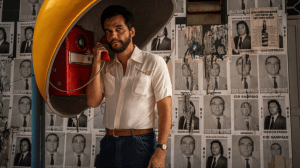In 2015, when Ryan Coogler was finishing up “Creed,” he swung by the Underground Museum to visit Kahlil Joseph at his studio. The cable news was on the TV in the background, and with then-candidate Donald Trump in the race, the presidential election was in full swing.
“The news was just really front and center all of a sudden, in a way that I had never really noticed before, as a form of engagement and as a moving image format,” said Kahlil Joseph, recalling the birth of “BLKNWS” while a guest on this week’s episode of the Filmmaker Toolkit podcast.
Joseph can’t remember the exact context of the news clip of a Black man that caught his and Coogler’s attention, but it sparked an all-too-familiar conversation between the two filmmakers about how Blackness, the Black community, and Black voices were rendered in the news.
“I remember turning to Ryan and saying, ‘Man, we should just do the news ourselves,’ in a kind of playful way,” said Joseph. “And then in that moment, realizing who we were, what kind of agency and power [we had], and the opportunity we could create for ourselves.”
The soft-spoken, press-shy Joseph isn’t puffing his chest. In fact, at that moment, prior to “Creed” being released, he was the more established of the two filmmakers. Through his music videos alone, Joseph was widely recognized as one of the most influential, innovative filmmakers not working in feature films, with short-form projects like the 2013 “Until the Quiet Comes,” for musician Flying Lotus, which won the Grand Jury Short Film Prize at the Sundance Film Festival, and the 15-minute film about Compton in “good kid, m.A.A.d city” for Kendrick Lamar. He was also the original visionary behind Beyoncé’s “Lemonade.”
Never able to find the right project to bridge his filmmaking interests and Hollywood’s desire for him to make a feature film, Joseph gravitated more toward the art world. The since-shuttered Underground Museum in Los Angeles — started by his late brother, artist Noah Davis, and his late father, prominent sports and entertainment attorney Keven Davis — had become a communal gathering spot for Black artists and cultural figures. The type of place Coogler would, as he had that day, just swing by.
Although they weren’t yet calling it “BLKNWS,” the idea of the alternative platform was born, and the two filmmakers continued to discuss it until “Creed” was released, and Coogler became attached to “Black Panther.” Said Joseph, “Ryan was really gracious about it, saying, ‘Hey man, I don’t have the bandwidth to really do anything else, but godspeed.’”
Joseph’s first step was to start working with editors Luke Lynch and Paul Rogers (“Everything Everywhere All at Once”). The trio formed the production company PARALLAX, which started downloading YouTube clips, experimenting until they found the turntable-esque remix language of “BLKNWS.”
“I assumed if I was [watching YouTube over television], everybody else was doing that, too. And I got the sense, too, that people were excited about learning in a way that I don’t think the entertainment industry takes into account,” said Joseph.
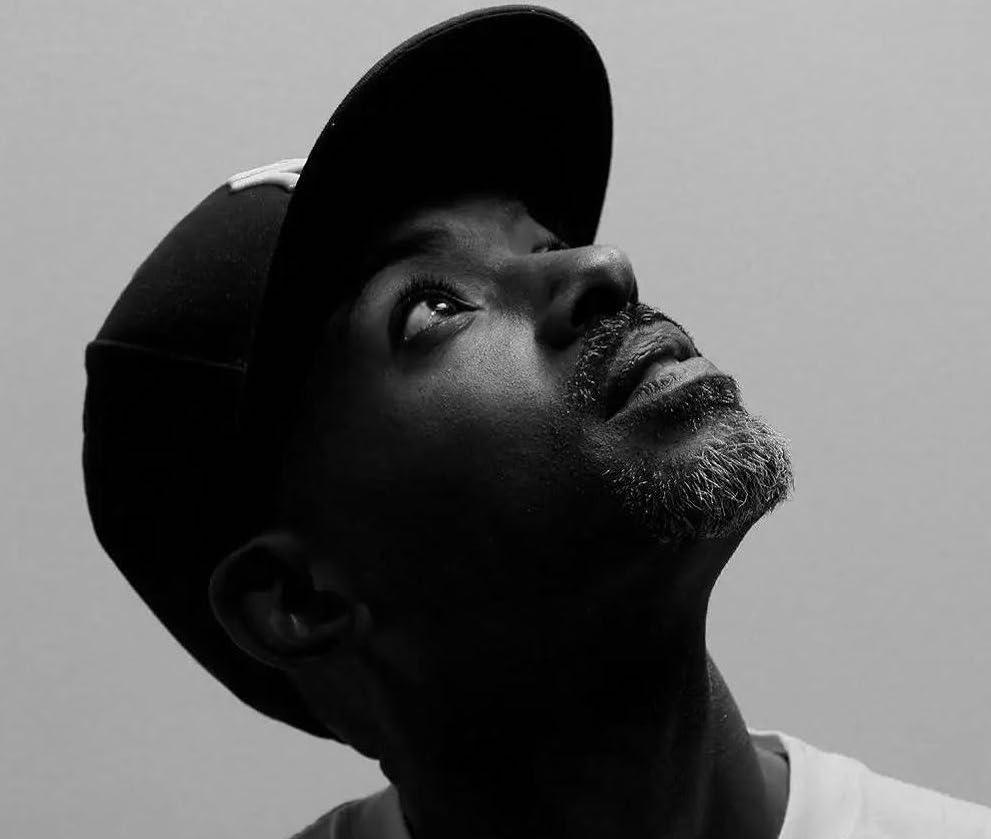
Increasingly, Joseph had been drawn to the ideas about Black culture, identity, and history by scholars and writers like poet/critical theorist Fred Moten and scholar Saidiya Hartman (a YouTube of the pair’s discussion at Duke became a key inspiration, a clip of which appears in “BLKNWS: Terms and Conditions”). But these were heady ideas that required a far deeper level of engagement.
“It felt like a lot of the activity around that work was happening in universities,” said Joseph. “I just thought if there was a way to translate some of that thinking into a visual medium in the form of what I would call ‘dispatches.’”
The two-to-five-minute dispatches =Joseph, Lynch, and Rogers edited were engaging, entertaining, musical, and thought-provoking in a way that could be simultaneously humorous and drop-dead serious. When Joseph brought a 60-minute edition of “BLKNWS” to the New Frontiers section at the 2020 Sundance Film Festival, he knew they had something that had the potential to welcome a far wider audience than an art installation at the Underground Museum. In his mind, it was the type of thing that should be on at the barber shop or a cafe, rather than CNN. But in a rare public Q&A after the screening, Joseph admitted that he and his wife, producer Onye Anyanwu, were openly struggling to find the right mode of distribution for this new platform.
On the podcast, Joseph revealed that, during a 2019 residency at Stanford University with “BLKNWS,” he received exposure to and offers from venture capitalists who saw its potential. Ultimately, he felt uncomfortable with their involvement at this early stage. Looking for non-VC funding, he told his agent he needed $2-3 million to turn “BLKNWS” into a proper production company.
“My agent at the time said, ‘Khalil, you know, a movie studio will give you $3 million to make this into a movie,’” said Joseph. “And I remember thinking, ‘Why would they do that? I can make an hour-and-a-half version of “BLKNWS” for free?’”
For 10 years, Joseph had been reading Hollywood scripts, but never found the right project. Drawn to filmmakers like Jean-Luc Godard, Apichatpong Weerasethakul, and Terrence Malick (who mentored Joseph early in his career), the very concept of a traditional narrative script was part of the problem.
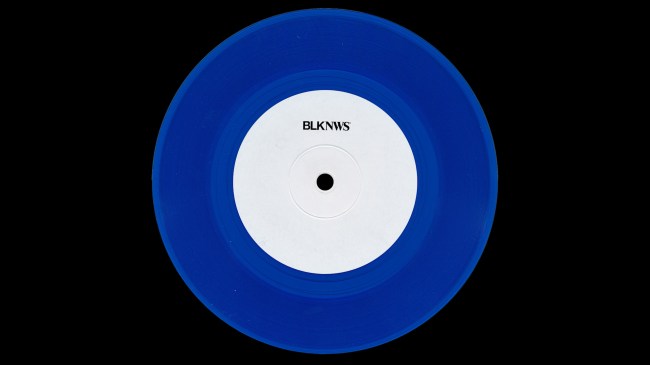
“The metaphor of music comes up a lot when I’ve listened to great filmmakers of the past talk about what it is to be a filmmaker, and how it ultimately functions in a viewer’s life,” said Joseph. “Sometimes the strict narrative rules of three-act structure and being resolved in the end sometimes feel like it can diminish the potential and the power of the work, not all work, but a lot of the best sequences, I think, in film history are musical in nature. There’s rhythm, tone, there’s lyricism.”
Six weeks after bringing “BLKNWS” to Park City, the COVID pandemic shut down the world, driving people even more online to absorb educational content in a way “BLKNWS” seemed to anticipate. That summer, the murder of George Floyd brought a new urgency to Joseph’s desire for “BLKNWS” to take the next step. Although his dream of making a feature film and getting $3 million to make “BLKNWS” a proper media company were separate things in the filmmaker’s mind, Joseph felt it was time “to listen to what the universe was telling me.” So he agreed to turn “BLKNWS” into a feature film for A24 and Participant.
The Feature/Album
Although Joseph sensed scripted elements could be a new ingredient to add to the mix, writing a feature-length script felt inauthentic to the project. Instead, for three months, he invited a collection of artists, journalists, and thinkers (including Hartman) to the Underground Museum to dream up the possibilities of a feature-length film. The result, a 300-plus-page “script document,” included over 100 “dispatches” that ultimately became what A24 and Participant would greenlight and attach a budget to.
Which of those dispatches would become the 21 tracks of “BLKNWS: Terms and Conditions,” and how it would all fit together was something to be discovered in a process. Joseph explained that it was more akin to how a musician approaches making an album.
“One of my favorite albums of all time is ‘Kind of Blue,’ and some of my favorite moments on that album are from John Coltrane and Bill Evans, not Miles Davis. When I learned about how ‘Kind of Blue’ was made, you’d hear about Miles coming in with just some ideas and themes. He’s not coming in with all the sheet music for everybody to play,” said Joseph. “And that always struck me [in] a beautiful way, [to] hire really great people whose tone, whose skill, and whose creativity you admire, especially based on the ideas that you’re trying to explore, and let them do what they’re good at.”
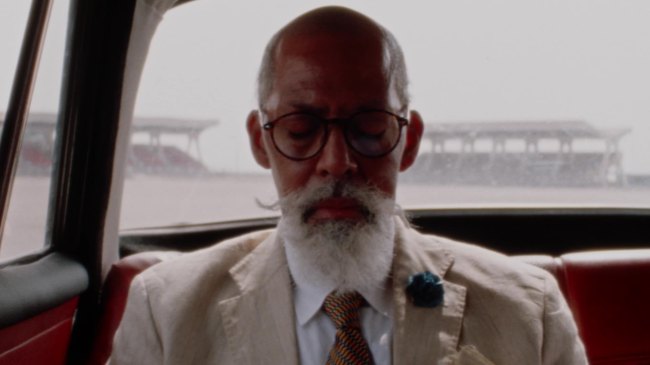
A good example of how this worked is the section on W. E. B. Du Bois in 1963, who, in the last six months of his life, moved to then-recently liberated Ghana to try to finish his dream of writing the “Encyclopedia Africana.” Joseph always saw this “track” as being directed by “Time” director Garrett Bradley — he’s not able to fully vocalize the reasoning, but it was something he felt strongly about — and its inclusion in the film hinged entirely on Bradley saying yes.
After seeing “Terms and Conditions,” it is hard to imagine the film working without this section, especially considering the role that “Encyclopedia Africana” (completed posthumously in 1999 by Henry Louis Gates Jr. and Anthony Appiah) plays as a framing device. But Joseph insists, not only did the idea of that framing device come afterwards, in the edit, but the reason the film feels like a preconceived and pre-orchestrated whole is the magic of the album-like approach.
The collaborative approach was taken to an unprecedented extreme for the film’s largest and only fictional throughline, “The Nautica,” about a futuristic cruise ship rooted in Marcus Garvey’s thwarted dream of the Black Star Line. For this scripted narrative section of the film, which serves as both a throughline and the culmination, Joseph split director duties. He would direct half the scenes working with cinematographer Bradford Young, and the other half would be directed by Raven Jackson (“All Dirt Roads Taste of Salt”), working with cinematographer Jomo Fray (“Nickel Boys”)
“We would share actors and [split] the scenes. Raven was interpreting things one way, and I was interpreting things another, which I have to think is unprecedented,” said Joseph. “We didn’t review each other’s footage. We would use different lenses, different lighting, and it was really fascinating.”
Saving the End
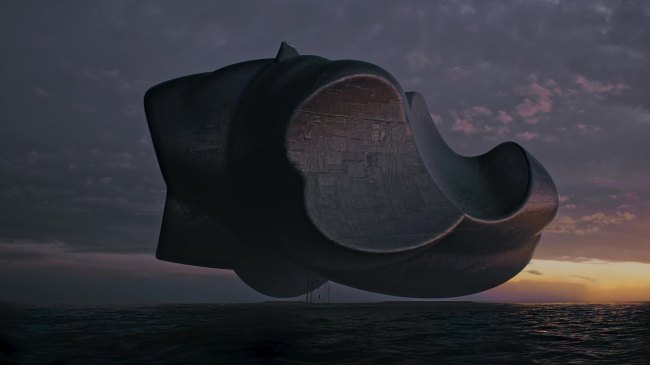
What Joseph didn’t walk away with from the unusual “Nautica” shoot was an ending. The scene on the bow of an Afrofuturistic cruise ship simply didn’t work as it was originally shot. A problem, according to Joseph, that A24 and Participant didn’t seem interested in addressing.
“I think what makes a good film is how it ends,” said Joseph. “And they wouldn’t even get on the phone with me to talk about reshooting it.”
It’s been reported that A24, which had slated the film for 2024, grew frustrated and quietly withdrew from distributing the film. A separation that became public when the now-defunct Participant, which financially backed the film, pulled “BLKNWS: Terms and Conditions” from Sundance days before it was set to premiere. Participant officially parted ways with Joseph, allowing him to find a new distributor, Rich Spirit.
Without the studio’s support, Joseph continued to struggle with how to shoot the ending of his film. Should he shoot it practically — two actors, himself, and a cameraperson “stealing” the shot aboard a real cruise ship? Green screen? And with what money?
“I actually didn’t know how to shoot it,” said Joseph. “And there was one person I felt like who could help me, as another director, a senior director, and it was Steven Soderbergh, who I did not know at all.”
Beyond Soderbergh’s all-around technical expertise and noted problem-solving skill set, he had just made “Let Them All Talk,” which takes place on a cruise ship. Joseph reached out to a mutual friend to see if Soderbergh would be willing to hop on the phone to talk through his situation.
“I’m talking him through what I was trying to do and [Soderbergh] said, ‘If you don’t mind me asking, what are you doing? What’s the movie? Who are you making it with?’ And I said, ‘Oh, I’m making it with this studio [Participant] and this distributor [A24], but they won’t pay for it, they won’t even get on the phone with me.’ And he said, ‘I tell you what: If they won’t pay for it, I will.’”
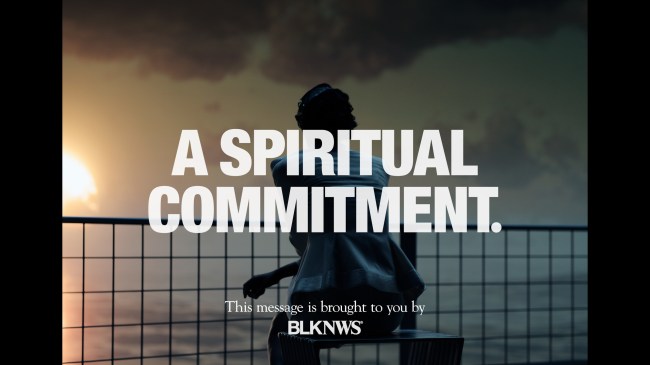
Joseph was flabbergasted. “I was like a.) you don’t know me. B.) You don’t even know what [it’ll cost],” to which Soderbergh replied, “I just want you to go finish your movie.”
The filmmaking solution Soderbergh talked Joseph through to achieve the virtual cosmic-like feel of the film’s ending was to shoot on The Volume, an LED virtual stage, similar to what was used on “The Mandalorian,” and a “very expensive” option. After their call, Soderbergh wired the money the next day, refusing any backend, preferring a “special thanks” instead of the executive producer credit Joseph insisted on giving him.
“We shot in a clandestine way, never telling the studio. We didn’t know what [Soderbergh footing the bill for the reshoots] meant, we didn’t know if it would ever work, and we didn’t know if we were going to get sued. We didn’t know if we could use the footage,” said Joseph. “I’ll never forget [how] the studio watched the new cut of the film with these new reshoots, and they didn’t even acknowledge that they were there. They didn’t even say, ‘So you have some new footage and all of a sudden the movie was working because there was an ending, where it was all 1764246042 leading up to something.’ But, shout out to Steven Soderbergh. We wouldn’t really have a film if it wasn’t for him.”
‘BLKNWS: Terms and Conditions’ opens in 12 cities on Black Friday, November 28.
To hear Kahlil Joseph’s full interview, subscribe to the Filmmaker Toolkit podcast on Apple, Spotify, or your favorite podcast platform.
